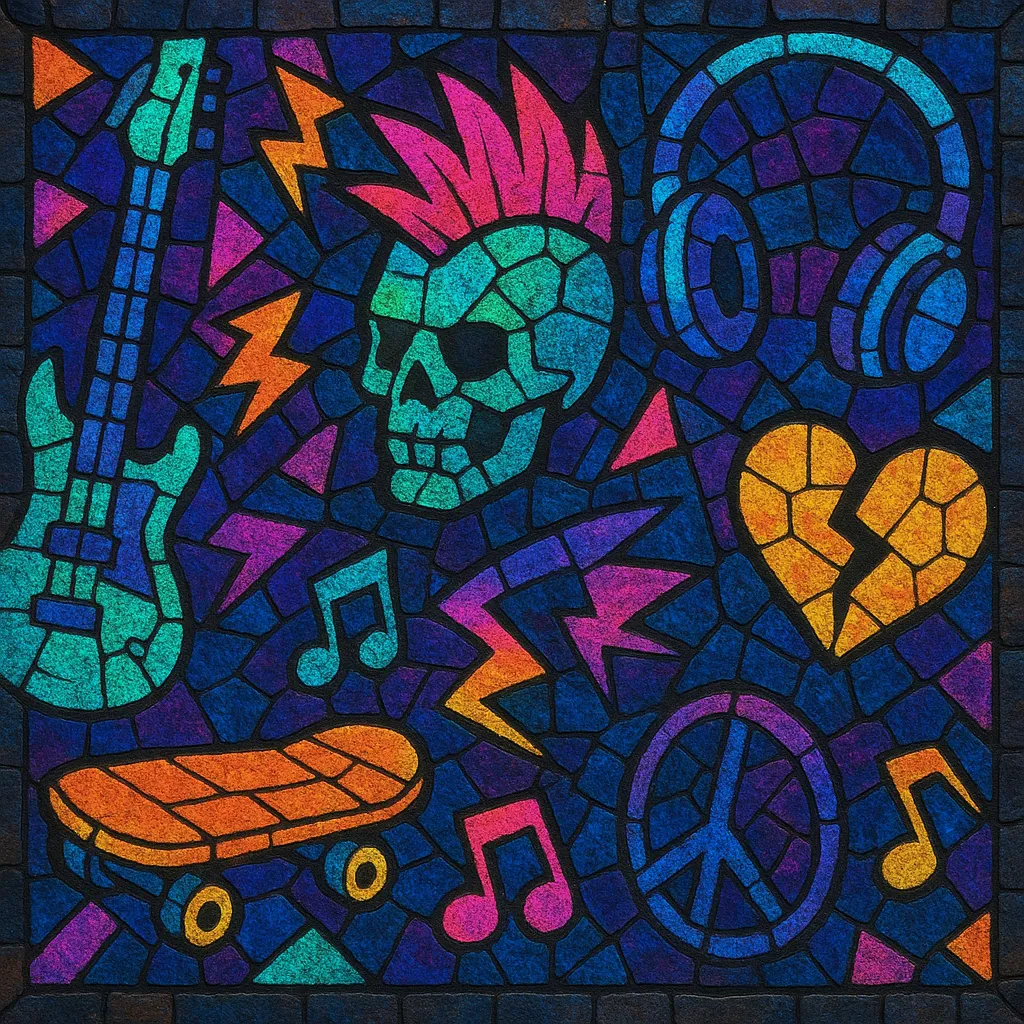
Neon pop punk is a glossy, synth-splashed offshoot of pop punk that emerged in the late 2000s alongside the MySpace/“scene” era and Warped Tour culture. It retains the brisk tempos, power-chord guitar drive, and catchy, chantable hooks of pop punk, but pairs them with bright electronic textures, dance-pop rhythms, and a highly processed, radio-ready sheen.
Sonically, you’ll hear palm-muted guitars layered with fizzy polysynths and arpeggiated leads, four-on-the-floor kicks or clap-heavy pop grooves, and clean, often Auto-Tuned vocals stacked with harmonies and gang shouts. Lyrically, it leans toward youthful romance, summer escapism, and playful party imagery, packaged in a neon-bright aesthetic that defined late-2000s teen alternative culture.
Neon pop punk took shape in the United States during the late 2000s as pop punk bands embraced MySpace-era digital culture and club-ready production. Touring ecosystems like the Vans Warped Tour and labels tied to Fueled by Ramen/Decaydance helped incubate a wave of acts who fused power chords with glossy synths and dance-pop beats. MySpace virality, photogenic “scene” styling, and bright visual branding (“neon”) became as emblematic as the sound itself.
Between 2008 and 2011, the style reached a commercial moment: bands scored Hot 100 entries and MTV/Top 40 exposure while still living on alternative circuits. Tracks favored sing-along choruses, four-on-the-floor kick patterns, handclaps, and heavily tuned vocals, bringing pop-punk energy to radio-friendly, club-influenced productions. The result was an effervescent, youth-centric soundtrack for prom nights, mall culture, and Warped Tour summers.
As EDM and indie pop rose in the 2010s, some neon pop punk artists pivoted deeper into electropop or mainstream pop rock. Others returned to a more guitar-forward sound. Even as the branding cooled, the era’s melodic sensibility and hybrid toolkit—stacked harmonies, sidechained synths, and hook-first writing—continued to inform crossover pop-rock and internet-native scenes.
A wave of nostalgia on TikTok and streaming playlists revived interest in late-2000s pop punk. Younger artists drawing from hyperpop, digicore, and emo rap borrowed neon pop punk’s sugar-rush hooks and digitized gloss, fusing them with contemporary internet aesthetics. The style’s legacy now lives in a broader pop-punk renaissance and in genre-fluid online communities that keep its bright, maximalist spirit alive.
Tempo and Groove: Aim for 130–165 BPM. Alternate between pop-punk backbeats (punchy snares on 2 and 4) and four-on-the-floor, clap-forward dance-pop patterns. Use energetic fills to set up big chorus drops.
•Harmony and Progressions: Favor bright, diatonic progressions in major keys (I–V–vi–IV is common). Pre-choruses often lift tension with IV–V movements or a relative minor pivot before resolving to an explosive chorus.
•Guitars: Layer palm-muted verses with crunchy, open-chord choruses. Double-track rhythm guitars for width and add occasional octave leads for sparkle. Keep parts tight and complementary to synth hooks.
•Synths and FX: Use glossy polys, arpeggiated leads, and sidechained pads that “pump” with the kick. Add risers, noise sweeps, and clap builds to create EDM-style momentum between sections.
•Vocals: Clean, youthful timbre with tight stacks. Subtle Auto-Tune or hard-tune is stylistically authentic. Build call-and-response hooks and gang vocals for earworm choruses.
•Lyrics and Aesthetics: Write about late-night escapades, crushes, summer nostalgia, digital-age romance, and friendship. Keep imagery vivid and playful, matching the neon-bright visual identity.

